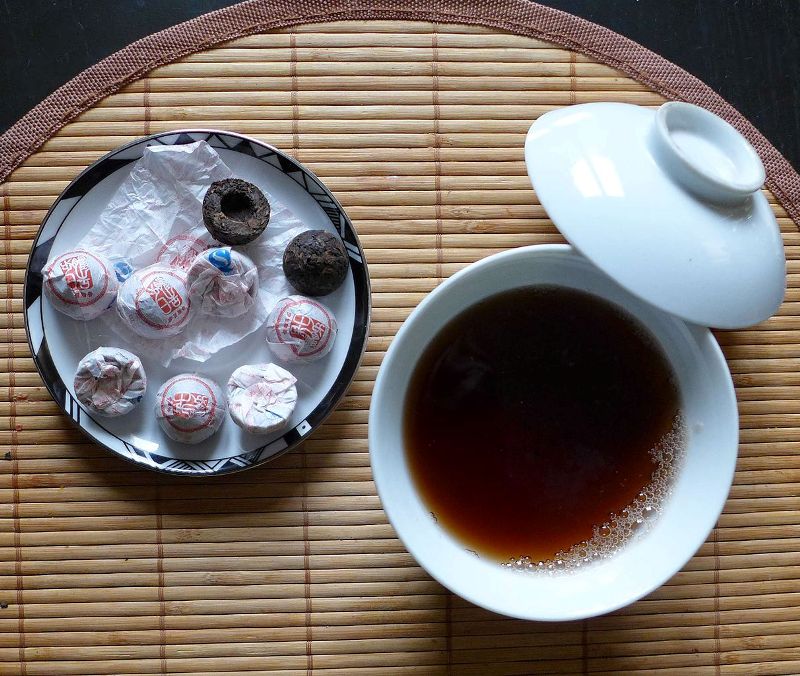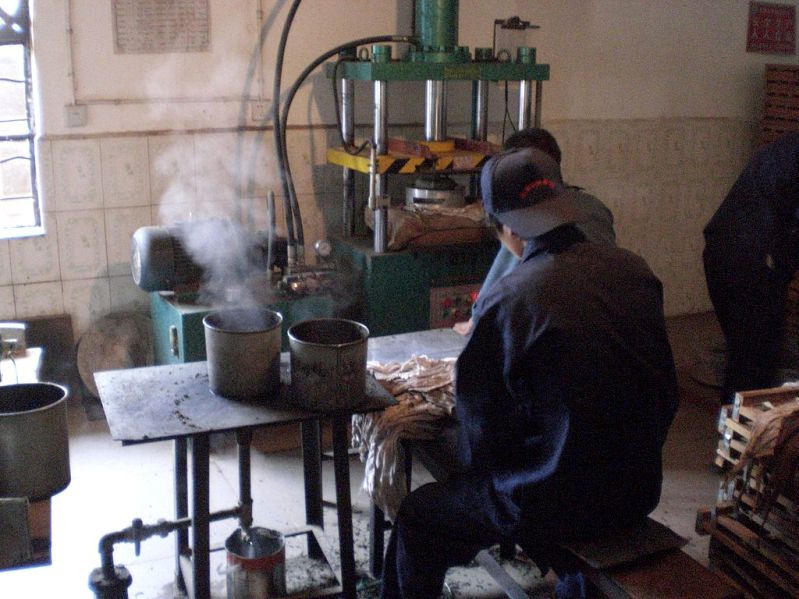Hey everyone! Last time we talked a little bit about what pu-erh tea is, and how sheng, or “raw” pu-erh tea is made. Today I’d like to get into how a teawright crafts a shou, or “ripe” pu-erh.
Making Shou Pu-Erh
For most of its history, a teawright created pu-erh using the techniques to make sheng. But, the process is slow, and it takes many years for pu-erh tea to be crafted this way. As demand for pu-erh increased, many tea companies began to look for a way to speed up the process. So, in 1973, the Menghai Tea Factory and the Kunning Tea Factory devolved a method they called “Wo Dui”. This roughly means “wet piling” in English.
Both the sheng and shou methods start exactly the same. A teawright harvests the leaves from the wild tea trees growing on the mountains. They then start by preparing the leaves the same way as if they were about craft green tea leaves. This type of green tea is called maocha, or “rough tea”.
The goal of Wo Dui is to create conditions that will mimic the aging process. This enables teawrights to craft a pu-erh tea in a fraction of the time it would take. A teawright does this by getting the tea leaves wet, placing them in a pile and covering them with damp cloth. They will have to turn these piles several times during the aging process. This is like the process of composting. By turning the leaves, the teawright ensures that all the moisture and bacteria spread evenly through the pile.
With the right temperature and humidity, the same microbes involved in crafting sheng will thrive. This includes the microbe Aspergillus Niger. Most teawrights and scientists consider Apergillus Niger to be responsible for pu-erh fermentation. The difference is, instead of aging for years or even decades; Wo Dui can ferment pu-erh in just a few months. It is also important to remember, that much like sheng pu-erh, the temperature and humidity must be just right. Otherwise, unwanted microorganisms can start to grow on the leaves. This can have disastrous effects on the quality of the tea.
After the fermentation finishes, teawrights form the leaves into cakes and prepare them for sale. Because these teawrights can craft the leaves faster, pu-erh crafted by the Wo Dui method is much more available to buy and is much more inexpensive. Next time, we’ll discuss how to buy pu-erh. We’ll also talk about the proper way to steep, serve, and store pu-erh leaves.
Discuss this post on our subreddit
[related-posts]


